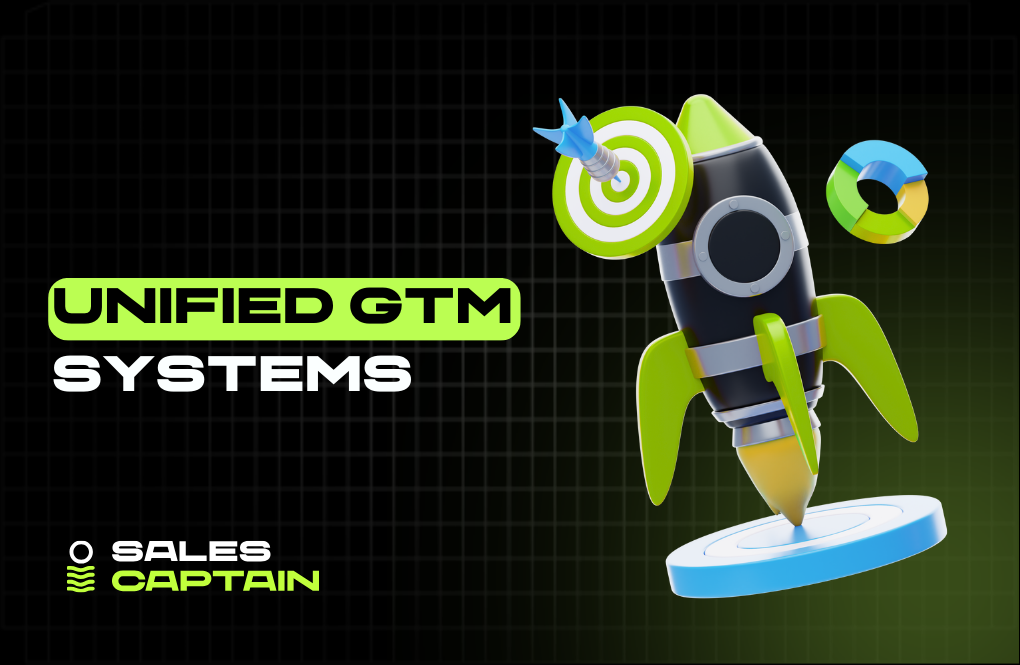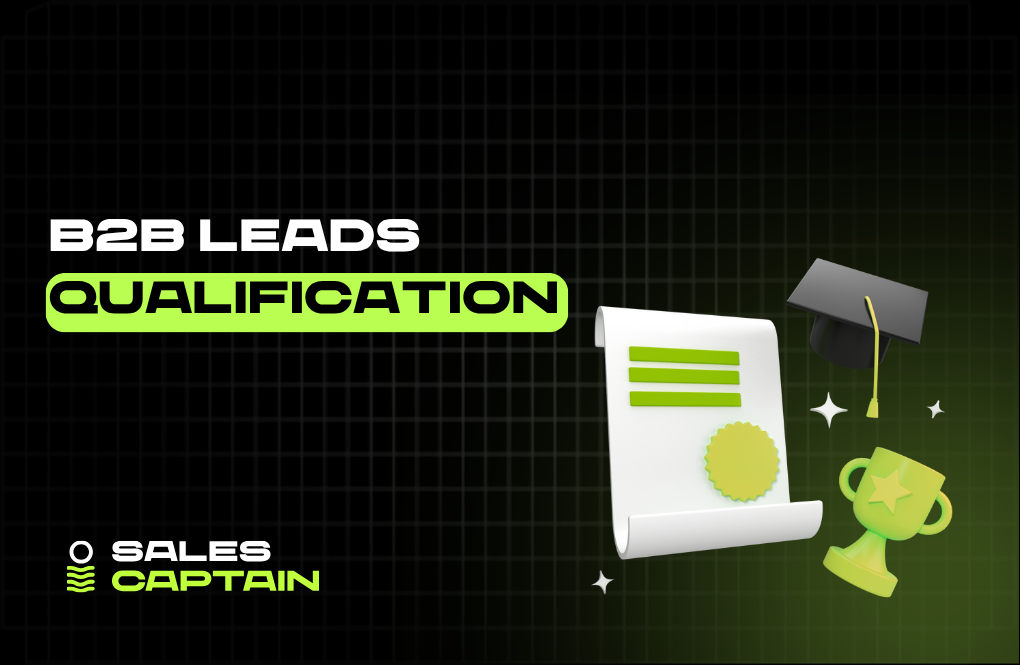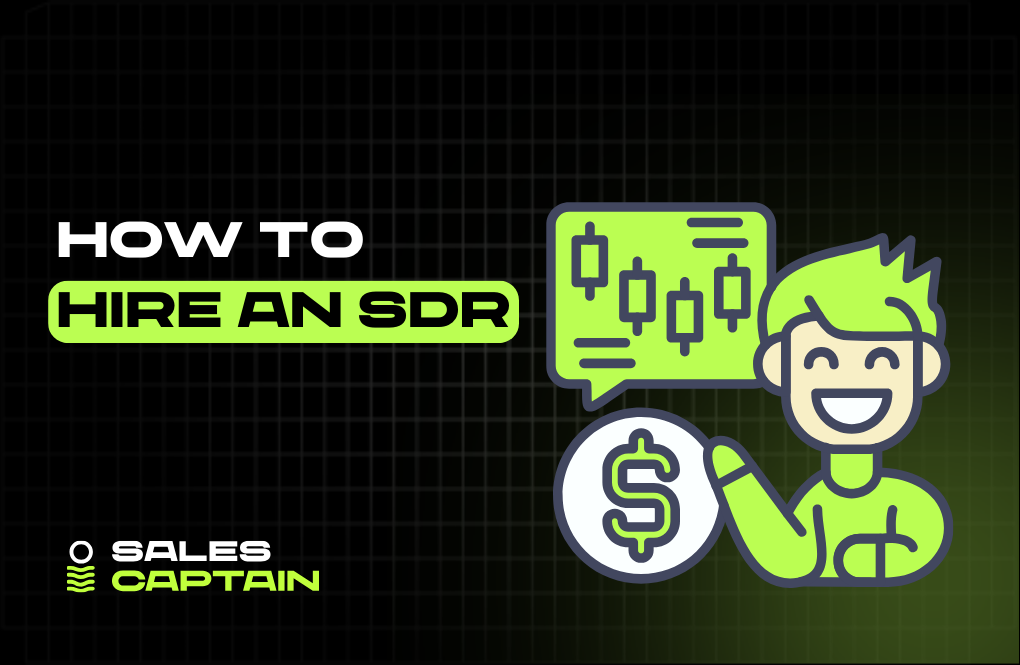

Unified GTM Systems That Turn Signals into Pipeline, Not Just Activity


Unified GTM is what happens when revenue teams stop guessing and start operating from one shared system. Instead of sales running one playbook, marketing running another, and ops trying to patch the gaps, a unified go to market engine connects live data, buyer signals, and trigger based workflows in one place.
The result is simple but powerful, every team sees the same in market accounts, acts on the same signals, and runs plays that are coordinated across channels. In this guide, we break down how unified GTM works, which tools and signals matter most, and how to wire a system that turns data into pipeline instead of noise.
Why Unified GTM Matters Now
The Shift Toward a Data-Driven Approach
Go-to-market was once intuition-based, with experienced reps guessing the right moment to reach out, and marketers hoping content would hit. Not anymore.
Today, the winners build their GTM around real-time data signals. Buyer intent, product usage, firmographic shifts, funding events, everything feeds the engine. With tools getting better and AI lowering the cost of research and outreach, waiting around just isn’t an option.
Outbound isn’t just sales territory now. It’s a marketing motion. Signals trigger workflows, not just contact uploads. Top teams monitor a live feed of in-market accounts and act on it fast.
The data isn’t just nice to have. It’s the fuel. Without it, your GTM is just expensive guessing.
Challenges in Modern Revenue Strategies
Revenue teams are stuck in silos. Sales runs one playbook, marketing runs another, and PS tries to hold things together with duct tape. It’s messy.
You’ve got SDRs chasing cold leads while marketing gets ignored. You’ve got attribution fights every quarter. And worse, you’ve got great tech that no one fully uses because workflows aren’t unified across teams.
Complicated buying journeys don’t help. Buyers bounce between channels, expect personalization at scale, and ignore any message that feels irrelevant. Legacy strategies fall apart under this weight.
Even automation backfires if the system behind it isn’t tight. Spray-and-pray sequences. Leads routed to nowhere. Data flowing in but never used.
Unified GTM solves this, but only if you treat it as a system, not a slide deck.
Core Concepts of Unified GTM
Understanding Unified GTM
Unified GTM isn’t a team meeting or a better alignment doc. It’s a shift in how companies architect revenue growth.
It starts with a shared source of truth, who your best customers are, what signals matter, and how outreach happens. Sales, marketing, and ops stop operating in silos and execute plays from one GTM engine.
It’s not just alignment. It’s infrastructure.
Shared workflows. Shared signals. Shared accountability. When GTM gets unified, every part of the team contributes to pipeline velocity, not just pipeline volume.
Key Components of a Successful Strategy
A functional unified GTM system has three moving parts:
- Live, enriched data: Not just a CRM full of contacts. A real-time view of ICP accounts, firmographic triggers, and buying signals.
- Trigger-based workflows: Actions that launch automatically based on specific criteria, not gut feel. Think AI-enhanced research, custom messaging, and task creation without human effort.
- Feedback loops: Constant iteration. GTM leaders don’t “launch campaigns; they test and tune systems based on what revenue teams learn in the field.
Together, these components create compounding outputs: faster personalization, better conversion, scalable outreach, and a clean attribution path.
The Role of Signals in GTM
Signals are the heartbeat of a modern GTM motion.
They tell you which accounts are moving, hiring, funding, launching, or searching. They turn spray-and-pray into sniper mode. And thanks to AI and tools like Clay, they’re accessible at scale.
Instead of cold outreach lists, you get prioritized workflows. Instead of guessing when to follow up, you get triggers that fire based on real behavior.
Signals flip the GTM game from push to pull; you’re not interrupting, you’re responding.
Framework for Implementing Unified GTM
Step-by-Step Guide to Unified GTM
- Start with your ICP. Not the vague one-pager, the one you can use to build queries and triggers.
- Map your signals: What events or traits define a good prospect? What should trigger outreach?
- Build your data engine: Centralize enrichment, account scoring, and source of truth. Don’t rely on static CSVs.
- Define your plays: Craft GTM motions that activate based on signals and pull in personalized outreach.
- Automate the execution layer: Don’t just assign tasks to reps. Deliver the context, data, and draft message.
- Create closed-loop feedback: Every play should report performance back to the system.
It’s not magic. It’s wiring the GTM machine so revenue growth becomes predictable.
Building Repeatable Plays for Scaling
Plays aren’t the sequences in your sales engagement tool. They’re end-to-end workflows.
They start with a signal, a funding event, a tech install, or a new title at a target account. Then they pull in research from tools like Clay. They auto-generate messaging. Route tasks. Measure outcomes.
You can’t scale with just people. You scale with repeatable, high-precision plays that run on infrastructure, not manual hustle.
Identifying Ideal Customer Profiles
This goes deeper than “mid-market SaaS with 100+ employees in the US.”
You need traits, behaviors, and triggers. What technologies do they use? What hiring or funding signals correlate with successful deals? What stage are they in your funnel?
Your ICP should be queryable. It should drive your entire GTM motion, from targeting to headcount planning.
Get this wrong, and every workflow downstream breaks.
Crafting Targeted Messaging
Message-market fit is table stakes. But most messaging still sounds like a brochure.
When you’ve got the right signals and research, you don’t need to say much. Call out the why. Show them you did your homework. Drive toward relevance in two lines.
The research is the differentiator now, not the copywriting.
The best teams automate this too. They use tools that pull context like recent LinkedIn posts or tech stack changes, and generate draft messages that feel personal at scale.
Tools and Technologies for Unified GTM
Top Tools for Signal Detection
Signals don’t come from one place. Job changes, tech installs, funding rounds, new initiatives, all scattered messily across public data, scraped content, and intent platforms.
That’s why tools like Clay are game changers. Clay connects to dozens of data sources, detects buying signals, and lets you build custom workflows using those insights. It’s not just enrichment, it’s actionable signal orchestration.
Use this link and you'll get 3,000 free credits to test it for yourself.
Product-led growth companies might track product usage signals. Enterprise GTM may rely on hiring intent. Either way, without tech to collect and contextualize these insights, you're just blindfolded outbounding.
Automating Research and Personalization
Manual research kills scale. But generic messaging kills reply rates.
So you automate the research, job titles, company news, tool usage, funding triggers, and pipe it into your personalization layer.
Here’s where Clay shines again. You can scrape websites, pull social activity, and even generate mini summaries with AI. Then feed that into personalized emails that feel hand-written… but aren’t.
AI isn’t here to replace humans. It’s here to remove grunt work so humans can scale strategy.
Leveraging Multi-Channel Sequences
Buyers don’t live in your inbox. They jump between email, LinkedIn, webinars, podcasts, and product pages.
Your sequences should too.
Multi-channel doesn’t mean copying the same message to each platform. It means adapting the content to where the buyer is and why they’re there. LinkedIn = credibility. Email = direct value. Retargeting = visual reinforcement.
The best GTM operators treat sequencing like product design, testing combos of touchpoints, formats, and CTAs to increase conversion, not just output.
Attribution and Metrics That Matter
Establishing Effective Attribution Models
GTM leaders don’t argue over “who sourced the deal” anymore. They ask: what triggered it, what accelerated it, what converted it?
Multi-touch attribution matters, but only if built around how your GTM system works. If outbound triggered the first meeting off a signal, and marketing nurtured it to demo, give both teams the data they need.
Attribution models should tie back to pipeline stages, account movement, and campaign impact. Otherwise, it’s just retroactive guesswork.
You can’t improve systems you can’t measure.
Key Metrics to Measure Success
Top-performing organizations track fewer metrics; they just obsess over the right ones.
Your goal isn’t more meetings. It’s a scalable, efficient pipeline.
Start here:
- Signal-to-opportunity rate
- Time-to-touch once a signal is detected
- Outreach personalization rate
- Pipeline velocity per segment
- CAC-to-LTV ratio per GTM motion
Surface insights quickly. Build dashboards that reflect your GTM system, not just activity logs.
Tracking Revenue Growth
Revenue growth should be traceable back to GTM operations.
What plays drove it? What signals predicted it? What channels supported it?
Track revenue against initiatives and workflows, not just quarterly campaigns. This lets you double down on what compounds, instead of what spikes and dies.
Evaluating Customer Engagement
Engagement goes beyond open rates.
Are prospects clicking to book? Responding with relevance? Moving through the funnel?
If you’re using a system like SalesCaptain, an outbound agency focused on demand gen you’ll know that precise, signal-based targeting lifts engagement across the board.
Evaluate GTM engagement like you'd evaluate product activation. It’s how you spot truth in the noise.
Common Mistakes to Avoid
Overlooking Data Integration
Most GTM failures aren’t caused by bad outreach. They’re caused by disconnected data.
When sales has one view of the account, marketing has another, and ops is patching spreadsheets together , the system breaks. You get inconsistent targeting, double outreach, and wasted effort.
Unified GTM only works if the data flows. Enrichment, scoring, and signal routing need to be centralized and accessible in real-time.
Using great tools in isolation still leads to bad decisions. The power’s in the connections.
If you're not wiring your GTM workflows into a live, integrated data layer, you're just automating chaos.
Ignoring Buyer Signals
Your buyers are speaking , not with words, but behavior.
Job changes, ad clicks, tech installs, page visits, company news , it’s all signal. And if you’re not listening, someone else is.
The mistake? Treating outbound like it’s blind. List-pulling instead of signal-watching. Sequences launched based on quarterly targets, not buyer intent.
A modern GTM engine doesn’t chase cold leads. It reacts to warm signals.
Ignore them, and you’re not competing , you’re just noise.
Failing to Iterate on Strategies
Most GTM plans die in the launch phase.
They start strong, but when replies slow or metrics dip, nobody adapts. Plays get abandoned or blamed, instead of optimized.
Unified GTM only compounds if it’s a living system. That means constant iteration , test branches, signal refinements, message tweaks.
This isn’t “set and forget.” It’s “build and evolve.”
Teams that treat GTM like a one-time configuration will get left behind by those who test like growth marketers.
Comparison of Unified GTM Approaches
Traditional vs. Modern GTM Strategies
Traditional go-to-market was built around outbound scripts, inbound funnels, and siloed playbooks. Each team owned its piece and hoped it added up to revenue.
But B2B buyers don’t move in straight lines anymore. They self-educate, ghost sales, and expect brands to know when and how to reach out. Traditional GTM can’t keep up.
Modern GTM is signal-drive, multi-channel, and orchestrated by systems , not silos. It blends real-time data, automation, and shared feedback loops across marketing, sales, and ops.
Think of it like the difference between a playbook and an operating system. One looks polished. The other actually runs the business.
In-House Solutions vs. Third-Party Tools
Some teams try to stitch their GTM stack themselves , cobbling together CRMs, intent tools, APIs, and manual processes. You might get control, but at the cost of speed and cohesion.
In-house builds mean weeks of setup for every new play. And every change requires technical lift.
Third-party platforms and agencies accelerate the whole thing. Tools like Clay give you access to real-time enrichment, signal detection, and automation without building from scratch. Cold outreach partners like SalesCaptain bring the demand gen systems and GTM infrastructure already wired.
In-house may look cheaper at first. But under the hood, it usually burns more time, attention, and revenue. The right third-party stack lets you operate like a modern GTM team , before your competitors figure it out.
Success Stories from Unified GTM
Case Studies of Effective Implementations
One Series B SaaS company struggled with noisy outbound and long sales cycles. After unifying their GTM motion around hiring signals and firmographic triggers, their outbound team cut ramp time in half and doubled their reply rates.
A B2B fintech firm used to run quarterly marketing campaigns in isolation. After shifting to a signal-based GTM system, they built plays that triggered off Series A funding and new CFO hires , converting cold contacts into pipe within days, not months.
The pattern? When signals drive the motion and systems automate the work, GTM becomes a growth engine , not just a plan.
Lessons Learned from Industry Leaders
Top-performing GTM teams don’t wait for strategy alignment meetings. They build shared systems that execute the play, measure the result, and loop it back into the process , automatically.
They obsess over data flow. They kill siloed workflows. They know that outbound is now just another marketing lever , one that happens to scale incredibly well when powered by signals and AI.
And critically, they staff for systems , not just sellers. Operators and technical marketers lead the charge. SDRs vanish, workflows replace them.
The lesson? Revenue success isn’t about bigger teams. It’s about tighter systems.
Tips for Continuous Improvement
Iteration and Adaptation in GTM
The best GTM systems aren’t rigid. They’re dynamic.
That prospecting workflow that crushed last quarter? Might underperform now. That intent signal you trusted? May no longer correlate with closed deals. Systems need tuning.
Top teams treat every GTM motion like an experiment , tracked, tested, refined. They use feedback loops from every reply, meeting, and loss reason to tighten targeting, messaging, and play timing.
If you’re not iterating weekly, you’re letting stale assumptions drive high-cost activity.
Staying Ahead of Market Trends
Markets shift. Buying power moves. New tools disrupt the playbook every quarter.
Winning GTM orgs don’t just react. They scan early and adjust fast.
Are AI SDRs replacing your team’s outbound motion? Cool , redeploy humans into strategy and ops. Is LinkedIn reach tanking? Time to test new channels or behavior-based triggers.
Set up a system that lets you pivot without panic. That means modular plays, testable components, and a nimble GTM stack that doesn’t take weeks to rewire.
Your strategy can’t outrun the market forever. It has to evolve with it.
RELATED ARTICLES
Check out more articles on our blog!
RELATED ARTICLES
Lorem ipsum dolor sit amet, consectetuer adipiscing elit, sed diam nonummy nibh euismod tincidunt ut laoreet dolore magna aliquam erat volutpat.




.jpg)





